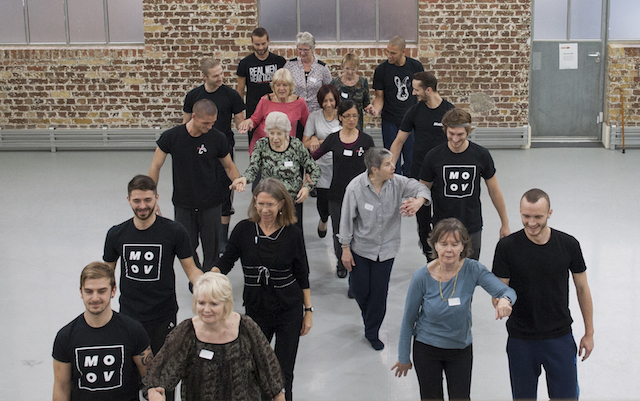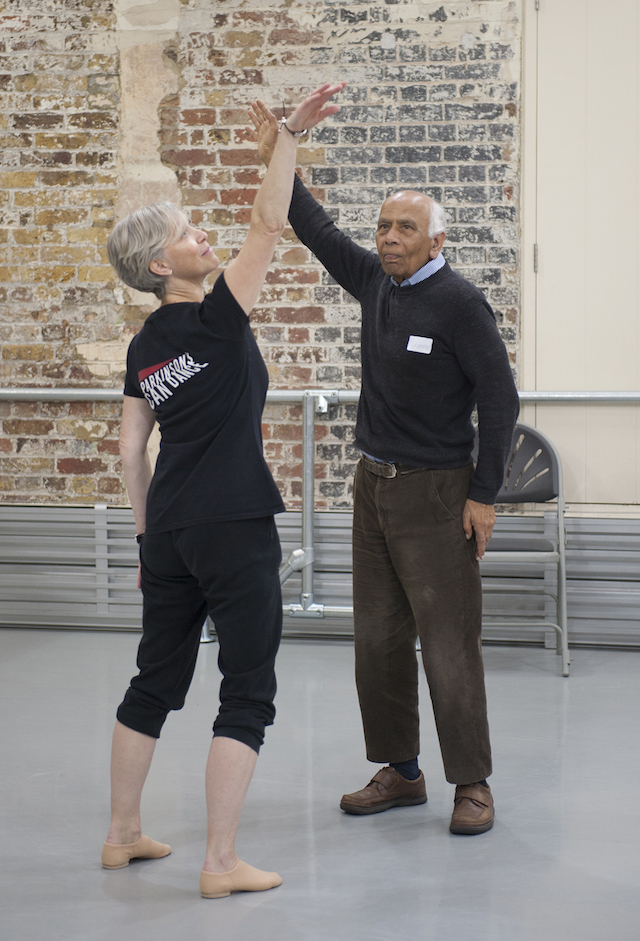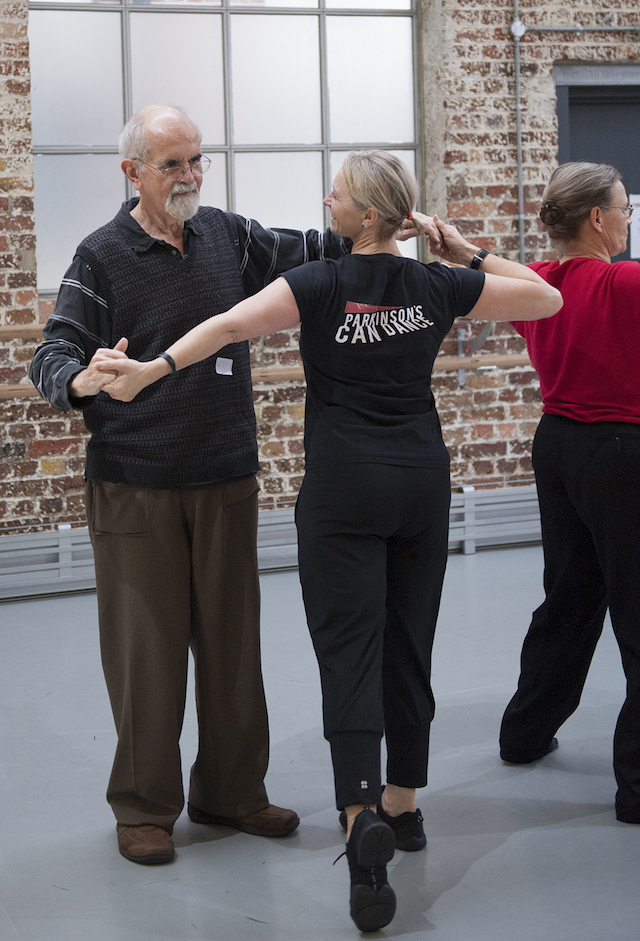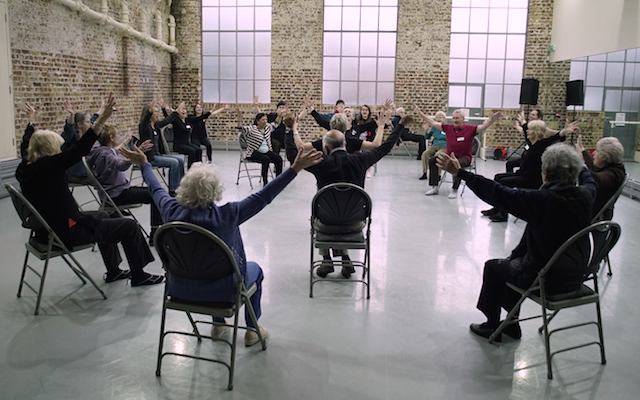
Ballerinas buoy the moods of 50 people with Parkinson’s each week at specialised dance classes in London. Here, writer Fiona Kingston takes part in a class and learns how movement therapy improves both the self-esteem and agility of participants
In a quiet street in Kingston, London, UK, live music and animated conversation flood out of a stylish dance studio. The studio is home to the award-winning BalletBoyz CAN Dance Programme, where ex-Royal Ballet dancers bring happiness, mobility and purpose to people living with Parkinson’s.
Martin Buckley has lived with the condition for nine years and finds that its unpredictable nature limits what he does. Before Parkinson’s, he and his wife enjoyed jive and won a medal for ballroom dancing.
Martin said: “With this class, I feel much happier. Parkinson’s is very isolating. If the dancing goes well it’s phenomenal – you remember how smashing dance is.”
Ballerinas Rebecca Trevitt and Annie Breckell launched the programme in 2015, integrating live music and vocals with ballet.

Rebecca explains the programme’s aims: “We provide the tools to improve posture, gait, movement and speech. Their experiences can often centre on losing skills and mobility. We’re raising their self-esteem. There is still something to learn. We are showing them what they can do.
“We focus on fun, not therapy. Parkinson’s is left outside the door, they come here to dance. Occasionally, they leave their walking sticks and frames behind. There couldn’t be a bigger compliment than that.”
Noelle Dwyer, who stopped working for a garden design company soon after she found it difficult to climb step-ladders at London’s Chelsea Flower Show, said: “The classes help me on so many levels. I can forget about the day-to-day difficulties in living with Parkinson’s and just enjoy the live music and movement.
“At the beginning of the class, I feel very shaky, bent forward and shuffling. At the end of the class, I feel energised, walking out with a spring in my step. I also experience greater mobility and a sense of well-being through the friendship and companionship of the group.”
Dr Sara Houston, who was lead researcher on the English National Ballet’s Dance for Parkinson’s Programme, University of Roehampton, from 2010 to 2015, reports that her findings mirror those experienced by the people attending the classes in Kingston.
Dr Houston said: “People with Parkinson’s find it hard to initiate movement. They need an outside nudge, or `cue’ to help that happen. Dance is often good at giving cues. Instructions on how to do little sequences of movement can help. Another cue can be the music.”

Further benefits from dance reported by the University of Roehampton’s team include:
– improved fluency of movement
– reduced instances of ‘freezing’
– energised and motivated participants.
To plan their classes, Rebecca and Annie, life-long friends and Royal Ballet School contemporaries, explore the repertoire of famous ballets. The class and their carers then go to watch them at the theatre.
Rebecca says: “The class is a real mental workout – as well as the physical benefits the psychological benefits are huge. The shared activity gives them a whole new network of friends, who know exactly what they are going through. It’s an enjoyable artistic experience which differs from therapy experienced with physiotherapists.”
The class begins slowly. Participants do seated movements followed by breathing and singing exercises. From here they build up to standing movements using a chair for support before the finale, where everyone moves freely around the room.
The rhythmic music also helps with speech. Noelle, who after living with Parkinson’s for 10 years, finds it harder to move her jaw, says: “The live music is fantastic. I want to continue speaking clearly and this part of the class, together with facial exercises, helps me.”
The programme has received funding from the charity funding campaign, The Big Give, to ensure classes continue for another 12 months, but the pair realise that the main challenge is to maintain momentum.
There is now also a dance DVD available, to enable a greater number of people to take part in this unique programme. Their next project is to develop a piece for the group to perform.
Asked what makes the classes special, Noelle says it’s the “enthusiasm, passion and understanding” of the teachers. She adds: “I would give up without this class sometimes. It gives me an added incentive to make the best of what I’ve got.”
